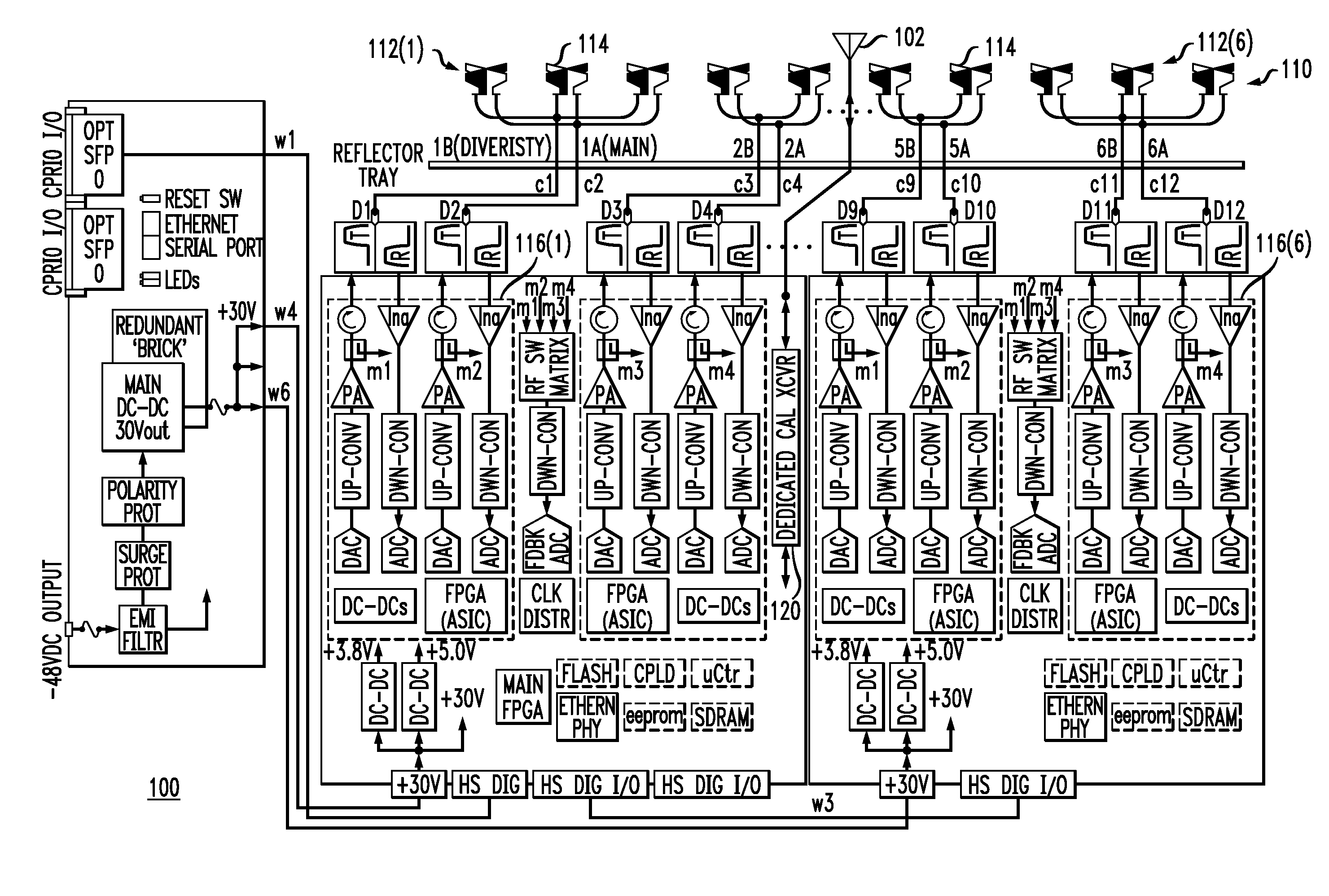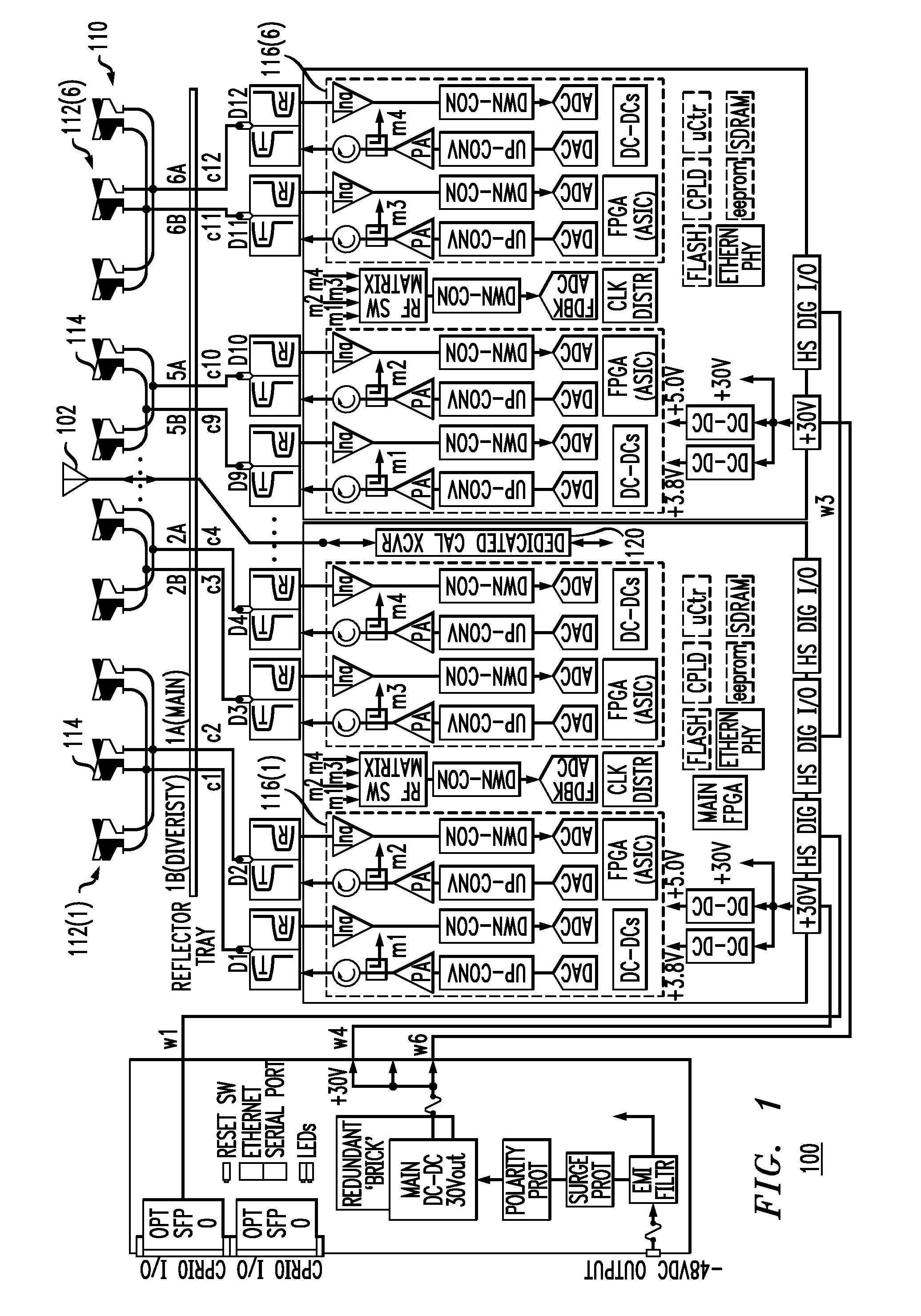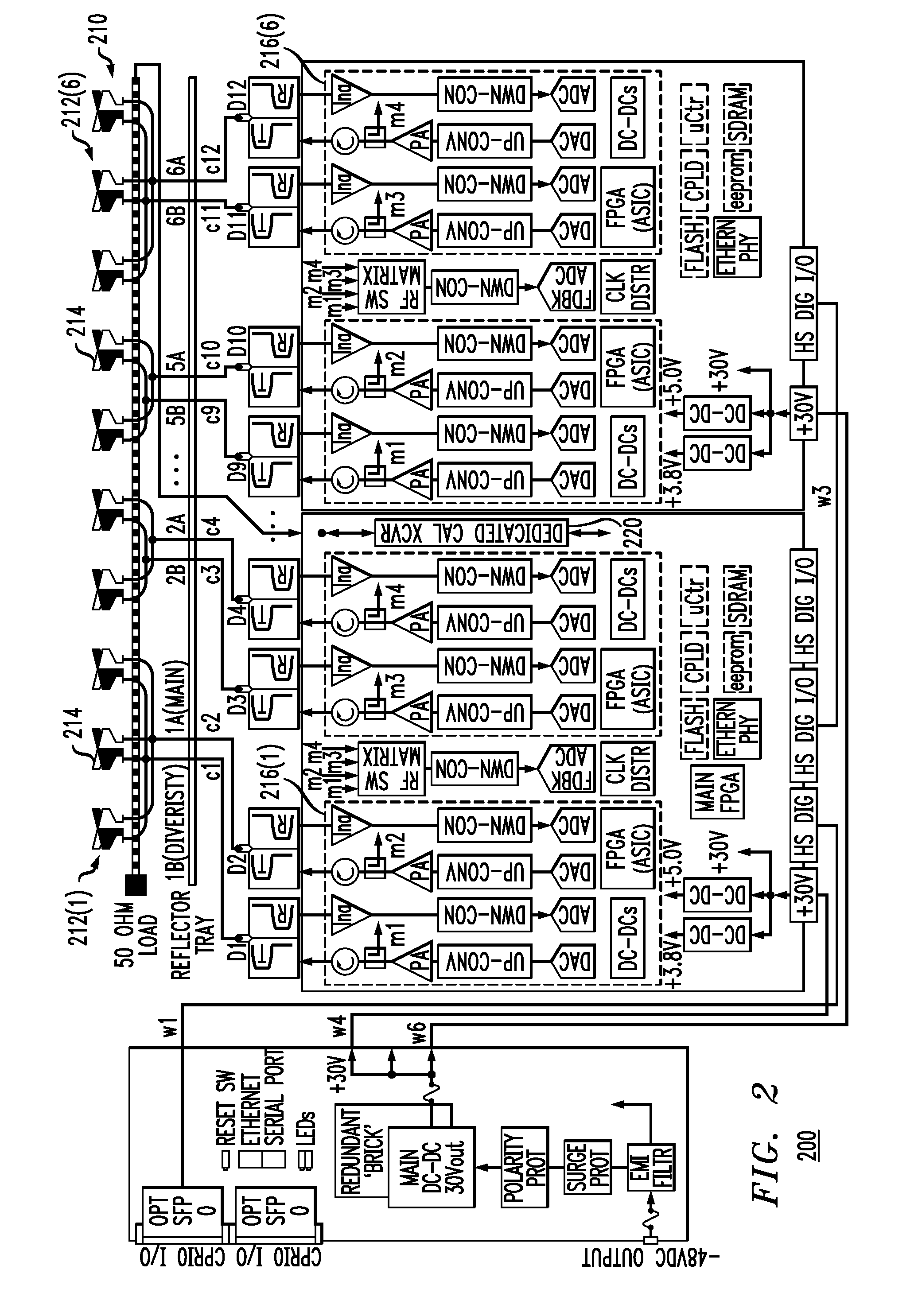Multi-Element antenna Calibration Technique
a multi-element, antenna technology, applied in the field of communication systems, can solve the problems of adding complexity and cos
- Summary
- Abstract
- Description
- Claims
- Application Information
AI Technical Summary
Benefits of technology
Problems solved by technology
Method used
Image
Examples
Embodiment Construction
[0013]FIG. 1 is a schematic block diagram of an antenna system 100 that employs an improved calibration technique, in which an additional calibration antenna element 102 is provided to the aperture, where the technique relies on the time-invariant nature of the mutual coupling established between the radiation patterns of the other antenna elements and the calibration element.
[0014]In this particular exemplary embodiment, antenna system 100 has a dual-polarized antenna array 110 consisting of six sub-arrays 112(1)-112(6), each of which has either two or three antenna elements 114. Note that sub-arrays 112(3)-112(4) and the corresponding electronics associated with those sub-arrays are not explicitly shown in FIG. 1, but are part of exemplary antenna system 100. As shown in FIG. 1, each sub-array 112(i) has a dual-transceiver radio 116(i) that is capable of concurrently (i) providing one or two different downlink signals for radiation from one or more of the corresponding antenna ele...
PUM
 Login to View More
Login to View More Abstract
Description
Claims
Application Information
 Login to View More
Login to View More - R&D Engineer
- R&D Manager
- IP Professional
- Industry Leading Data Capabilities
- Powerful AI technology
- Patent DNA Extraction
Browse by: Latest US Patents, China's latest patents, Technical Efficacy Thesaurus, Application Domain, Technology Topic, Popular Technical Reports.
© 2024 PatSnap. All rights reserved.Legal|Privacy policy|Modern Slavery Act Transparency Statement|Sitemap|About US| Contact US: help@patsnap.com










